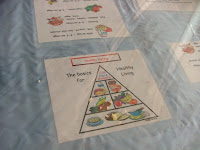Wednesday, 15 July 2009
Leadership Matters
Leadership Matters
Sunday, 12 July 2009
Sri KDU High School




Wednesday, 8 July 2009
Sri KDU
Sri KDU - http://www.srikdu.edu.my/main.php
Our first experience of Malaysian schools was Sri KDU Primary school, is a private school that follows the Malaysian National Curriculum.
My first impression of the school was how open and modern it looked, with the architecture maximising open spaces. This helped us in the very high humidity! We were greeted by Mrs Chan, the Principal of both the Primary and the Secondary schools. In our welcome briefing, we were told about the aims and the vision for the school, which was to nurture the mind, the heart and the soul. From this they aimed to develop learners with Malaysian hearts and global minds.
Mrs Chan was keen to share with us her education philosophy of interactive teaching through group work and presentations. From this, she hoped pupils would be better placed as they entered the work place, with the confidence to offer opinions and conduct presentations. In light of this, the school offered character building programmes to embed values and promote positive attitudes.
At this point, I think I speak for the group when I say that we were very keen to have the opportunity to get into the classrooms, speak to the pupils and teachers, and actually get a taste of the Malaysian school. Up to this point, our induction sessions had set the scene and we were desperate to actually experience it. We all leapt up eagerly when the headteacher of the primary school, Mr Roderick, offered us the opportunity to split up and visit various lessons.
I chose to visit an English class of pupils who were nine and ten. The lesson was fascinating to observe, both in the similarities as well as the differences. When we entered we were greeted by twenty beaming faces, all of whom stood behind their chairs and chanted loudly “Good morning teacher!” It was a phrase that became very familiar over the next few days! The children were sitting in pairs facing the front of the class, where the lesson was being delivered through an interactive whiteboard.
The objective of the lesson was plurals, and it followed a fairly standard Literacy hour format. It was the first experience of a Malaysian classroom, and the children certainly impressed us with their bright enthusiasm. One of the key differences was the use of children chanting instructions and answers and every time the children were asked to read or recite, they did loudly and clearly.
We then joined back with the rest of our group for the tour of the school, the highlight of which was the ballroom dancing lesson - yes, ballroom dancing! It was wonderful to watch the professional dance instructor leading the class in the Cha-cha-cha. We were able to see the incredible facilities, including a swimming pool, tennis courts and drama studio. One very noticeable difference, was the teams of cleaners who did an fantastic job constantly cleaning the building, ready to sweep a leaf aside the second it swirled to the floor.
After our tour, we were then invited to a delicious buffet, where the school prefects sternly kept other pupils away (which was a shame, as we would all have enjoyed a further opportunity to chat to the children). This relaxed lunch allowed to ask the teachers about their school. One element which greatly impacted on me, was the pride that was taken in their school, whether through academic achievement or winning various competitions. This was reflected in the prefect system, which was very evident in every school that we visited through the week. The prefects were very important members of the school community, who were developing early leadership skills and the ones who I spoke to were very proud of their responsibilities.
We left Sri KDU primary with an insight into how the private education system functioned in Malaysia and eager anticipation to compare this with the rest of the schools to be visited during the week.
Sunday, 5 July 2009
SK Menjarala Primary School













